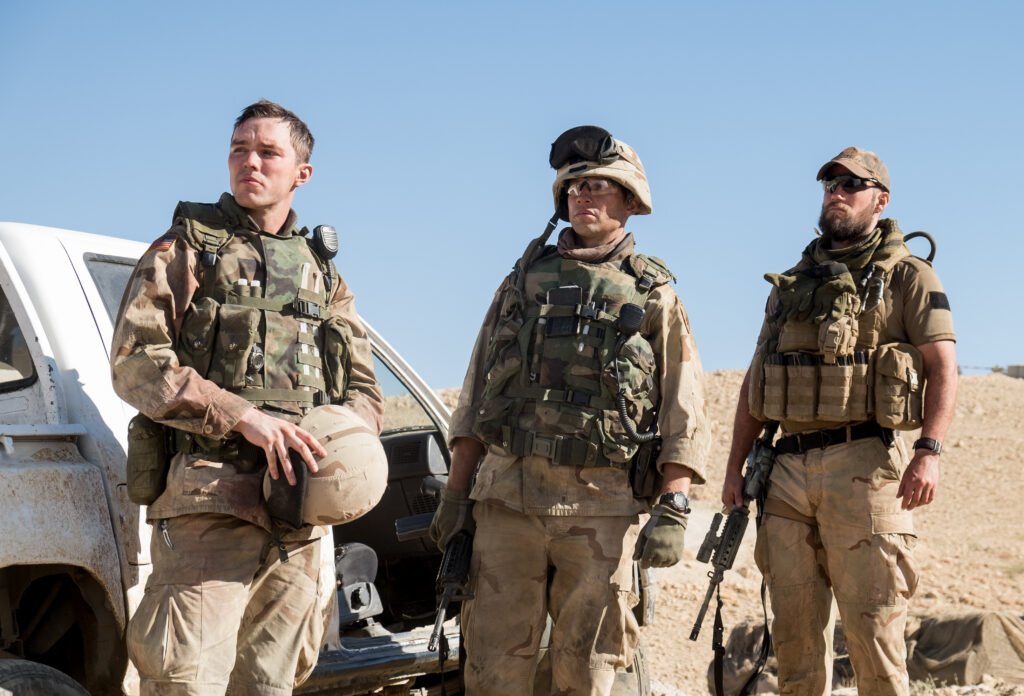
The makers of “The Sand Castle” consciously designed it using a straightforward formula. It is composed of a deserted island, an old dilapidated lighthouse and on and off radio communication. In the middle is a family with no external influences but themselves A nurturing mother, an ingenious father, a sulky teenager son and a dreamer daughter. Their continued existence depends on what seems like an insuperable task waiting in vain and living from one day to another. They expect help will be forthcoming soon. However, this modern-day Robinson Crusoe quickly turns into something darker and much more current than that. Although Matty Brown’s charming film is more like children’s story while it always threatens to
Turn into harsh thriller, its elliptical narrative undermines its grand vision making it hard for the audience to understand its message being passed across clearly. Survival stories depend on the determination and resilience of its characters. There is little food and fresh water is hard to come by. Sleep is nearly impossible and shelter almost untenable. Those who survive are those that can bear such conditions with nonchalance. However, in “The Sand Castle”, Brown (from a script he co-wrote with Hend Fakhroo and Yassmina Karajah) does not follow the adults bringing whatever they can find to eat nor the teenager who laughs at the hopelessness of their situation as depicted in the film’s title. The main emphasis mainly concerns Jana (Riman Al Rafeea), a young girl who spends most of her days walking along the shores she now has no option but to call home, creating sand castles or building homes for new friends among ants found in grassed areas. She knows it involves her parents waiting for something or rather someone.. They need help, clearly, but most importantly an opportunity to escape from these hazardous circumstances and terrible sea coast that lacks any signs of life on them.
Jana’s perspective drives the narrative and explains why the familial history is depicted so vaguely. In the beginning, faint murmurings of information broadcasts about sinking boats signify Jana and her family’s circumstances. However, it seems more like “The Sand Castle” takes more of a cue from “Life of Pi”, where its young lead character may have been fashioning an illusion to ward off some dark reality. These recurring visions of dead people along with a girl’s shoe found by Jana in the wilds may indicate that there is more tragedy lurking beneath its serene surface than she wants to admit.
Jana’s flights of fancy drive the aesthetics of the film while D.P. Jeremy Snell keeps the camera uncomfortably close to his subjects so much so that ants, flies, blades of grass and grains of sands often take up the bulk of shot space. This is a reality seen through the peephole that is a young girl’s imagination. Jana knows her family does not have a lot of time left. Her father Nabil (played by Ziad Bakri) is always busy fixing their lighthouse which they hope will help show them the way. Yasmine (played by Nadine Labaki) worries about how little food they all have to eat and fiddles with a radio she believes could be used to signal for help in case there was no other option. Throughout it all, her brother Adam (Zain Al Rafeea), alternatively neurotic and desperate, finally begins looking after Jana alone after one disaster follows another in their lives.
That last part of the casting is precisely what prepares the way for “The Sand Castle” to be discussed: Al Rafeea was a Syrian refugee residing in Beirut when he was chosen as the lead actor for Labaki’s “Capernaum” (2018). This is definitely a rather bold detail that can provide discerning audiences with an apt perspective on what is really going on with Jana and her family.
“The Sand Castle” doesn’t contain too much action. Instead, it has various happenings (a fishing expedition gone wrong, a strange thing shows up under the sand, and a storm hits the lighthouse). But they all have such a fragmented narrative (it is always clear we never get to see what is going on in its entirety) that rather than actual events, they come across as brief, terrifying nightmares. And this was done intentionally. Brown wants us to see through Jana’s eyes. However, this simply makes what is really going on more unclear or even obvious in some cases. That is why I am writing in such an evasive way so as not to spoil the film’s final climactic twist that occurs during its powerful third act. These frustrations are felt throughout watching the movie, and only slightly alleviated by the last dedication title card which explains quite plainly what the film tries to achieve with its good intentions.
Throughout “The Sand Castle,” there are enough clues which suggest that this island and this lighthouse may not be as they seem. Even if Brown does pull the curtain, or pulls out the rug from under us depending on your experience of its narrative style, but it takes so long a time that its urgent message about the present-day refugee crisis and how children are innocently caught up in it is too confused to deliver. Perhaps too dreamy at times and with some remarkable visuals here and there, this poetic tribute to children’s playfulness amidst traumatic experiences loses interest after one has grasped the concept behind it; for a political plea, hurry-up and wait; however rather emotionally self-absorbed than globally conscious enough plot-wise to succeed as much as it could have been.
For more movies like The Sand Castle (2017) visit on solarmovie







